
Students will use a model of the solar system to demonstrate the barycenter that exists between the earth and the sun.
- Subject:
- Earth Science
- Science
- Material Type:
- Activity/Lab
- Author:
- William Allred
- Carrie Robledo
- Date Added:
- 05/19/2021

Students will use a model of the solar system to demonstrate the barycenter that exists between the earth and the sun.

Students will use a model of the solar system to demonstrate rotation, revolution, kepler’s laws, Newton's laws, precession, nutation, seasons or tides.

This lesson will help students visualize barycenter and the relationship between the sun and the earth. Students will use a solar system model to demonstrate barycenter and see the effects of adding other planets into the mix.
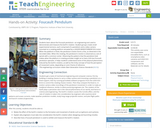
Students learn about the Foucault pendulum an engineering tool used to demonstrate and measure the Earth's rotation. Student groups create small experimental versions, each comprised of a pendulum and a video camera mounted on a rotating platform actuated by a LEGO MINDSTORMS(TM) NXT motor. When the platform is fixed, the pendulum motion forms a line, as observed in the recorded video. When the rotating, the pendulum's motion is observed as a set of spirals with a common center. Observing the patterns that the pendulum bob makes when the platform is rotating provides insight as to how a full-size Foucault pendulum operates. It helps students understand some of the physical phenomena induced by the Earth's rotation, as well as the tricky concept of how the perception of movement varies, depending on one's frame of reference.
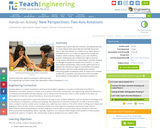
Students learn about two-axis rotations, and specifically how to rotate objects both physically and mentally about two axes. A two-axis rotation is a rotation of an object about a combination of x, y or z-axes, as opposed to a single-axis rotation, which is about a single x, y or z-axis. Students practice drawing two-axis rotations through an exercise using simple cube blocks to create shapes, and then drawing on triangle-dot paper the shapes from various x-, y- and z-axis rotation perspectives. They use the right-hand rule to explore the rotations of objects. A worksheet is provided. This activity is part of a multi-activity series towards improving spatial visualization skills. At activity end, students re-take the 12-question quiz they took in the associated lesson (before conducting four associated activities) to measure how their spatial visualizations skills improved.

Students will use a model of the solar system to demonstrate rotation, revolution, Kepler’s laws, Newton's laws, precession, nutation, seasons or tides. They will use kapwing.com to create their own stop motion video.
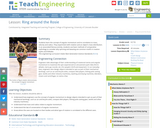
Students learn the concept of angular momentum and its correlation to mass, velocity and radius. They experiment with rotation and an object's mass distribution. In an associated literacy activity, students use basic methods of comparative mythology to consider why spinning and weaving are common motifs in creation myths and folktales.
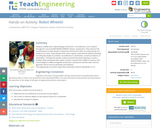
Students solidify their understanding of the terms "circumference" and "rotation" through the use of LEGO MINDSTORMS(TM) NXT robotics components. They measure the circumference of robot wheels to determine how far the robot can travel during one rotation of an NXT motor. They sharpen their metric system measurement skills by precisely recording the length of a wheel's circumference in centimeters, as well as fractions of centimeters. Through this activity, students practice brainstorming ways to solve a problem when presented with a given scenario, improve their ability to measure and record lengths to different degrees of precision, and become familiar with common geometric terms (such as perimeter and rotation).
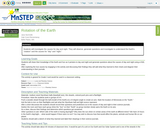
Students will share their knowledge of the Earth and Sun as it pertains to day and night and generate questions about the causes of day and night using a KWL chart. They will then use a flashlight and model of the Earth to investigate how the rotation of the Earth affects night and day. Students will discuss their findings, adding what they learned to their charts, and diagram their understanding in their journals.

Students will first use CoSpace to create a virtual model of Newton's. Students will learn how to use CoSpace to create 3D virtual models. Next students will review concepts of rotation, revolution, seasons, tides, barycenter, precession, nutation by further exploring CoSpaces. Students will learn to write code to enable the earth to rotate and then revolve around the sun.
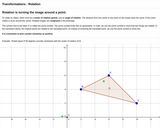
Informative text followed by images with hot spots describing rotation of an object around a point.

This applet allows the user to explore the world of translations, reflections, and rotations. It allows the user to translate triangles, squares, and parallelograms on both the x and y-axes. The user can also reflect the figure around x values, y values, and the line x = y. The applet will also rotate the figure any given number of degrees.

Composing Transformations--This is part four of a four-part e-example from Illuminations that features interactive figures that allow a user to manipulate a shape and observe its behavior under a particular transformation or composition of transformations. In this part, Composing Transformations, the users are challenged to compose equivalent transformations in two different ways. e-Math Investigations are selected e-examples from the electronic version of the Principles and Standards for School Mathematics (PSSM). Given their interactive nature and focused discussion tied to the PSSM document, the e-examples are natural companions to the i-Math Investigations.
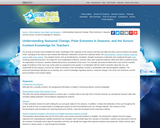
This free, standards-based website developed for elementary teachers provides hand-picked, reviewed, on-line resources to enhance teacher content knowledge regarding reasons for the seasons.